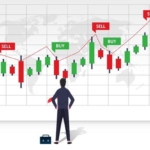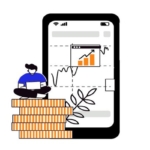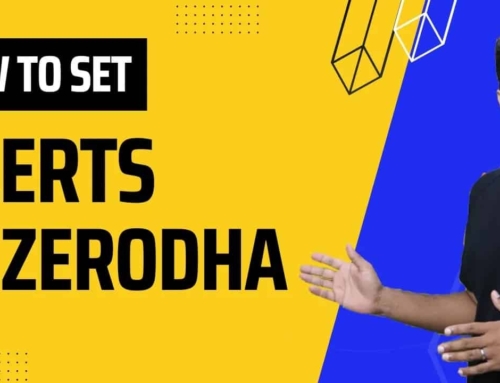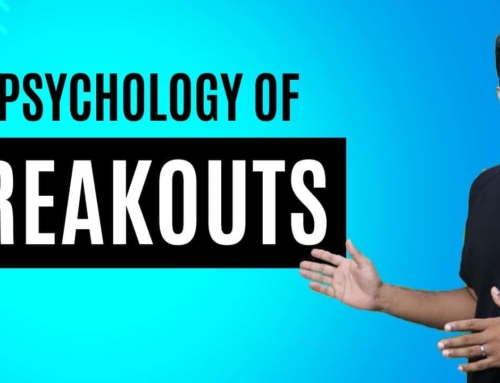What Is High Frequency Trading ?
Introduction
If you are in the world of trading, I am sure you would have heard about high-frequency trading.
But what exactly is HFT, how does it work, and can you and I, small retail traders, can do it?
Let’s answer all these questions in this video.
What is HFT?
HFT is a type of algo trading.
Algo trading, as you guys know, is when computers are used to trade on behalf of humans. Right? So, instead of manually placing buy and sell orders, we program a computer to place them for us.
In the US, algo trading accounts for over 80% of trades placed and that number in India is above 70%.
HFT is a highly specialized form of algo trading where trading happens at a very high frequency.
So, let me ask you this: how many trades can you place manually?
Even if you have cat-like reflexes, it’s very hard to place more than a few trades per second…isn’t it? 1 second goes like that.
But what if you have to place hundreds of trades in 1 second? What about thousands of trades per second? What about millions of trades that too in a fraction of a second?
This is how crazy the world of HFT is. So, obviously, HFT trading is completely automated and is done by high-performance computers with absolutely no human intervention.
Apart from the frequency of trades, what differentiates HFT from other trading styles is the duration of the trades.
Think of how long your trades usually take? If you’re an intraday trader, you might stay in the trade for maybe a couple of hours, or if you are
But, in HFT, the lifecycle of trade may not even last for a fraction of a second.
Ok, let’s just pause here and think about this…fraction of a second?
As a regular trader, I hardly get a few trading opportunities in a day- that too if I am lucky so how are these HFT finding not just 1-10 or 100…but thousands of opportunities that too in a second?
So, that brings us to HFT strategies.
High Frequency Trading Strategies
Clearly, buying at support and selling at resistance can not be what these guys would be doing right? There is something else going on here.
So, HFT focus on making very small profits over a very high number of traders….think of them as scalping but on steroids.
So, what kinds of opportunities are there in a fraction of a second?
Interesting, there are plenty of them.
One of the common strategies deployed is statistical arbitrage, which looks for inefficiencies in the pricing of a stock or index.
Let me make it simple. Think of a stock that is listed on both BSE and NSE. On BSE, it is trading at 100 rupees whereas on NSE, it is trading at 100.5. That right there is an arbitrage opportunity.
By buying the stock at a lower price and selling it at higher price, the
Such arbitrage opportunities can exist among stock and its future or within stocks of the same sector.
But real-life HFT strategies tend to be much more sophisticated than plain simple arbitrage..
Take, for example, the news-based strategies.
On the 14th of June 2021, Sucheta Dalal, the famous journalist who brought down the Harshad Mehta empire tweeted the irregularities of the Adani group.
Twitter and the news blogs became all abuzz about the stock.
The stock went down 25% in the first hour and then went back up 25% in the rest of the day when the company categorically refuted all the claims.
A perfect example of how news flow strategies work. These algorithms constantly scan for negative or positive keywords in the news story. For example, if you see Adani Enterprise along with words such as fraud, allegation, cheating, investigation, etc.
The moment they get a critical number of news sources citing negative information about the company, these HFTs initiate short trades to take advantage of the fall in the prices.
Similarly, if you see good news about stocks such as “FDA approval” for pharmaceutical companies, and “RBI approval” for banking stocks, , these HFTs are equally ready to buy these stocks.
Who does High Frequency Trading?
HFT traders are investment banks, hedge funds, and institutional investors. Why? Why not retail traders like you and me?
Well, for the simple reason that we don’t have the right infrastructure, we don’t have the capital to build the servers, buy real-time data feed from a co-located server
Pros and Cons of High Frequency Trading
Now, let’s go over the pros and cons of HFT.
HFT has made a lot of people very rich but who are these people? You and I, the regular investor or trader are certainly not making money from it.
It is clearly the institutions. And if we consider trading as a zero-sum game, then
at whose expense? Well, at the expense of the little guy- like you and me. Right? If trading is a zero-sum game, and if the big made money, of course, the small guys have lost.
The second problem with HFT is the strategies they deploy.
Some of these strategies are designed to mislead….right, they sometimes flood the exchange with fake orders that they never had any intention of filling. As soon as the price reaches near them, these orders are automatically canceled.
But the biggest problem with HFTs is that our stock exchanges have become prone to flash crashes.
We talked about one such case
What can we do about High Frequency Trading?
Not much, actually. This technology is here to stay and although SEBI and the stock exchanges are trying to curb the illegal practices, wherever there is money to be made, people will figure out creative ways to make money.
There are some really fascinating strategies and dark aspects in HFT that we can discuss in the subsequent videos but one thing that should become obvious by now is that
Howdy!
If you’re here for the first time, let’s get introduced.
VRD Nation is India’s premier stock market training institute and we (Team VRD Nation) are passionate about teaching each and every aspect of investing and trading.
If you’re here for the first time, don’t forget to check out “Free Training” section where we have tons of free videos and articles to kick start your stock market journey.
Also, we got two awesome YouTube channels where you can continue the learning process.
Must-Read Articles
What is Insider Trading ?
Introduction
If you are in the world of trading, I am sure you would have heard about high-frequency trading.
But what exactly is HFT, how does it work, and can you and I, small retail traders, can do it?
Let’s answer all these questions in this video.
What is HFT?
HFT is a type of algo trading.
Algo trading, as you guys know, is when computers are used to trade on behalf of humans. Right? So, instead of manually placing buy and sell orders, we program a computer to place them for us.
In the US, algo trading accounts for over 80% of trades placed and that number in India is above 70%.
HFT is a highly specialized form of algo trading where trading happens at a very high frequency.
So, let me ask you this: how many trades can you place manually?
Even if you have cat-like reflexes, it’s very hard to place more than a few trades per second…isn’t it? 1 second goes like that.
But what if you have to place hundreds of trades in 1 second? What about thousands of trades per second? What about millions of trades that too in a fraction of a second?
This is how crazy the world of HFT is. So, obviously, HFT trading is completely automated and is done by high-performance computers with absolutely no human intervention.
Apart from the frequency of trades, what differentiates HFT from other trading styles is the duration of the trades.
Think of how long your trades usually take? If you’re an intraday trader, you might stay in the trade for maybe a couple of hours, or if you are
But, in HFT, the lifecycle of trade may not even last for a fraction of a second.
Ok, let’s just pause here and think about this…fraction of a second?
As a regular trader, I hardly get a few trading opportunities in a day- that too if I am lucky so how are these HFT finding not just 1-10 or 100…but thousands of opportunities that too in a second?
So, that brings us to HFT strategies.
High Frequency Trading Strategies
Clearly, buying at support and selling at resistance can not be what these guys would be doing right? There is something else going on here.
So, HFT focus on making very small profits over a very high number of traders….think of them as scalping but on steroids.
So, what kinds of opportunities are there in a fraction of a second?
Interesting, there are plenty of them.
One of the common strategies deployed is statistical arbitrage, which looks for inefficiencies in the pricing of a stock or index.
Let me make it simple. Think of a stock that is listed on both BSE and NSE. On BSE, it is trading at 100 rupees whereas on NSE, it is trading at 100.5. That right there is an arbitrage opportunity.
By buying the stock at a lower price and selling it at higher price, the
Such arbitrage opportunities can exist among stock and its future or within stocks of the same sector.
But real-life HFT strategies tend to be much more sophisticated than plain simple arbitrage..
Take, for example, the news-based strategies.
On the 14th of June 2021, Sucheta Dalal, the famous journalist who brought down the Harshad Mehta empire tweeted the irregularities of the Adani group.
Twitter and the news blogs became all abuzz about the stock.
The stock went down 25% in the first hour and then went back up 25% in the rest of the day when the company categorically refuted all the claims.
A perfect example of how news flow strategies work. These algorithms constantly scan for negative or positive keywords in the news story. For example, if you see Adani Enterprise along with words such as fraud, allegation, cheating, investigation, etc.
The moment they get a critical number of news sources citing negative information about the company, these HFTs initiate short trades to take advantage of the fall in the prices.
Similarly, if you see good news about stocks such as “FDA approval” for pharmaceutical companies, and “RBI approval” for banking stocks, , these HFTs are equally ready to buy these stocks.
Who does High Frequency Trading?
HFT traders are investment banks, hedge funds, and institutional investors. Why? Why not retail traders like you and me?
Well, for the simple reason that we don’t have the right infrastructure, we don’t have the capital to build the servers, buy real-time data feed from a co-located server
Pros and Cons of High Frequency Trading
Now, let’s go over the pros and cons of HFT.
HFT has made a lot of people very rich but who are these people? You and I, the regular investor or trader are certainly not making money from it.
It is clearly the institutions. And if we consider trading as a zero-sum game, then
at whose expense? Well, at the expense of the little guy- like you and me. Right? If trading is a zero-sum game, and if the big made money, of course, the small guys have lost.
The second problem with HFT is the strategies they deploy.
Some of these strategies are designed to mislead….right, they sometimes flood the exchange with fake orders that they never had any intention of filling. As soon as the price reaches near them, these orders are automatically canceled.
But the biggest problem with HFTs is that our stock exchanges have become prone to flash crashes.
We talked about one such case
What can we do about High Frequency Trading?
Not much, actually. This technology is here to stay and although SEBI and the stock exchanges are trying to curb the illegal practices, wherever there is money to be made, people will figure out creative ways to make money.
There are some really fascinating strategies and dark aspects in HFT that we can discuss in the subsequent videos but one thing that should become obvious by now is that















![What is Virtual Contract Note [Zerodha]](https://www.vrdnation.com/wp-content/uploads/2023/10/maxresdefault-virtual-note-500x383.jpg)



Leave A Comment